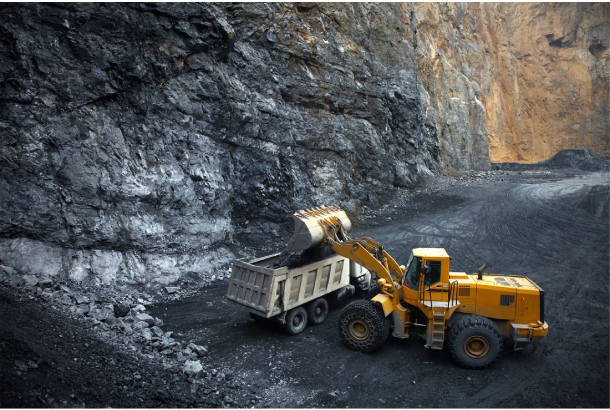by Tarun Sinha, President – Technical Ammonium Nitrate, Deepak Fertilisers and Petrochemicals Corporation
Construction & infrastructure sector growth in India is paramount for sustainable living of the rapidly growing population of the country. Government of India (GoI) has also recognized the critical role of this sector towards faster growth to meet the target of $5 trillion economy by 20261. Hence, GoI has embarked on ambitious investment plan for creating new infrastructure & upgrading the existing infrastructure in the Union Budget 2023. GoI has announced investment outlay of Rs. 10 lakh crore, which is a 33% increase2 year-on-year. Numerous schemes & incentives have been announced, such as Production Linked Incentive (PLI) scheme, ~100 transport infrastructure / last mile connectivity projects identified for connectivity for ports, coal, steel, and fertiliser sectors, and creating urban infrastructure in tier 2 & tier 3 cities through establishment of Urban Infrastructure Development Fund.
All the thrust & impetus on infrastructure development for the country’s growth necessitates adoption of superior & sustainable construction technologies, practices, raw materials & services. Standard construction & infrastructure practices heavily contribute towards pollution & waste generation due to their heavy reliance on large amount of energy, raw materials and water, etc. Therefore, in modern times, thrust and emphasis has shifted to responsible construction practices that are environmentally sustainable and resource efficient (ie, generate more output per unit of resource consumed). Development of infrastructure needs stone aggregates from quarry operations, Cement manufactured from limestone mining, steel manufactured from iron ore mining and power generated from coal mining in addition to other constituents. Therefore, sustainability of the construction and infrastructure development is very much dependent on the sustainable practices undertaken during the extraction of these minerals & stone aggregates, which are extracted through blasting, using commercial explosives.
Technical Ammonium Nitrate (TAN) is a chemical and the principal ingredient of most commercial explosives required for mineral and rock blasting. TAN is a white inorganic salt which has the chemical formula: NH4NO3. It is an “oxidiser” which contains approximately 60% oxygen and, therefore, supports combustion. TAN is not an explosive by itself. Commercial explosives are produced by mixing TAN with fuel and sensitizer. These commercial explosives, when used with other blasting agents like detonators and boosters, are rapidly converted into gases at high temperature and pressure in a confined state in the rock, leading to breaking of the rock/mineral.
Role of TAN in driving sustainability initiative
Mineral extraction either through mining or quarrying follows a typical value-chain as shown below.
The mining operation can be defined as ‘upstream’ in which production inputs are used and the ‘downstream’ in which broken rock/mineral is handled and processed.
Blasting activity has a significant impact on the downstream value chain in the mineral and rock production and extraction process. Improvement in Blasting efficiency has a multiplier effect on the downstream process and hence, has a significant impact on becoming resource efficient through generating more output per unit of resource consumed. Blasting efficiency is a factor of type of explosives used (based on the rock/mineral and associated geological conditions), and deployment of advanced technologies such as Blast Design, real-time measurement of blast outcomes, eg, rock fragmentation (correct sizes of blasted rock output enables faster excavation and also aids in improving crusher throughput), control in dilution (purity factor), vibration and noise control, blasted material profile etc. Drones and Artificial Intelligence are used to accurately analyse, simulate, and predict the results for improved safety and productivity. The use of latest technology, which includes Artificial Intelligence / Machine learning tools and software, ensures accurate monitoring, measurement of results and helps in predictive modelling aimed at optimization of resources with minimum environmental hazards, thus contributing towards sustainable mining and construction practices.
Ammonium Nitrate Fuel Oil (ANFO) explosive is a widely used explosive which is manufactured through use of ~94% of Porous Prilled TAN and ~6% Fuel Oil such as Diesel. ANFO explosives has a higher share of gas energy, which leads to better fragmentation of broken mineral/stone aggregates thereby leading to lesser use of secondary rock breaking (impact: reduced energy consumption), reduced excavation and transport cost of minerals/stone aggregates (impact: reduced fuel consumption in excavation & transport, lesser number of trips required to move mineral/stone aggregates), improved productivity of heavy earth moving machinery (impact: efficient use of resource), reduced crusher power consumption and reduced wear and tear of the crusher. Additionally, ANFO can be also manufactured using recycled lubricating oil/hydraulic oil which otherwise would have been incinerated or destroyed thereby ensuring efficient & sustainable uses of resources. Moreover, use of advanced technologies such Blast Design, Drones & Artificial Intelligence enable blasting outcomes to be well within the environmental control norms set towards ground vibration, fly rock, noise, etc, as many of the construction activities increasingly are being undertaken closer to villages & cities.
Today, government institutions, construction & infrastructure development companies have a critical mandate to improve their ESG performance. ANFO explosives coupled with the use of advanced technologies mentioned above leads to increased output of minerals/stone aggregates and at the same time has lesser adverse impact on the environment besides also delivering cost savings.
Conclusion
India’s demand for infrastructure development and therefore the need for minerals, power and rock aggregates is set to grow at a faster rate with the increasing population and the improving standards of living. At the same time, India is signatory to global sustainability initiatives (such as United Nations Framework Convention on Climate Change COP27, Sustainable Development Goals) which aims to improve the sustainability standards. TAN as a Mining Chemical will continue to play a vital role in enabling India’s infrastructure development aspiration and at the same time with the use of latest tools and technology deliver improved sustainability standards matching the best practices globally, which would be integral to supporting India’s economic growth in the decades to come.






